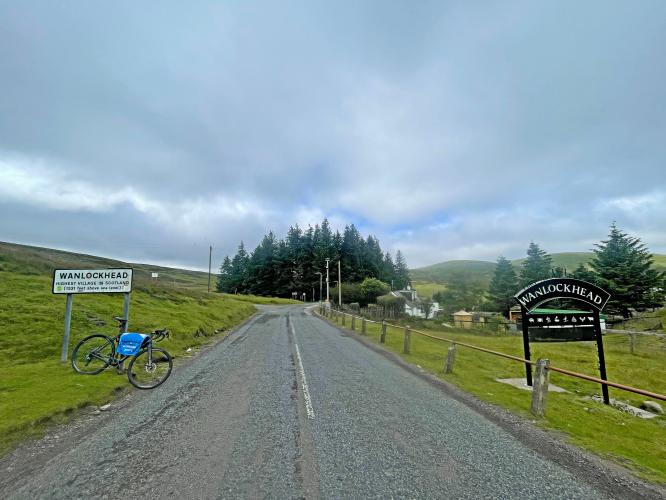
INTRO
PLAN YOUR ROUTE
 We've partnered with Sherpa-Map.com to bring you the best route planning tool. With a PRO Membership you can use this climb as a reference when creating your route.
We've partnered with Sherpa-Map.com to bring you the best route planning tool. With a PRO Membership you can use this climb as a reference when creating your route. ROUTE MAP



 We've partnered with Sherpa-Map.com to bring you the best route planning tool. With a PRO Membership you can use this climb as a reference when creating your route.
We've partnered with Sherpa-Map.com to bring you the best route planning tool. With a PRO Membership you can use this climb as a reference when creating your route. 
Cycling Mennock Pass, Scotland
Ride 7 miles gaining 1,221’ at 3% average grade.
Beginning on a bridge crossing over an old railroad track, Mennock Pass winds through a few homesteads before taking you into the big mountains of Scotland. About halfway up the climb, you enter a valley surrounded on all sides by lush green hills and there is even a river flowing parallel to the road. It is an astoundingly beautiful setting and you’ll likely see people camping and hiking around here. Past this valley, the grades kick up into the finish town of Wanlockhead, which holds the title as being the “Highest town in Scotland.” Traffic will likely be very mild on the road and everyone that did drive past me on the day that I rode drove respectfully.
Start climb just off A76 by riding north up B797.
Enter the highest village in Scotland at mile 6.3.
Visit the Mining Museum during your trip
(Photos: Britainexpress (main photo); inset Museum’s Twitter Page)
This is a gorgeous, bucket list-worthy climb that winds its way through a canyon that was covered by heather in purple bloom when we rode up in September 2018.
Share the road.
Purple blooms of heather on the hillsides (km 9).
When the clouds open - brilliant blue skies. 👍
The first 5½ kilometers of this climb are close to flat at 1.4%, but we respect Simon Warren’s start point because the beauty of those kilometers are worth the wait for the tough stuff.
Some history on Wanlockhead:
The village was called Winlocke until 1566, derived from the Celtic Cuingealach (the narrow pass).
Wanlockhead owes its existence to the lead and other mineral deposits in the surrounding hills. These deposits were first exploited by the Romans, and from the 13th century they began to be worked again in the summer. The village was founded permanently in 1680 when the Duke of Buccleuch built a lead smelting plant and workers' cottages.
Lead, zinc, copper and silver were mined nearby, as well as some of the world's purest gold at 22.8 carats, which was used to make the Scottish Crown. Wanlockhead became known as "God's treasure house" from the richness of its mineral resources.
William Symington, Engineer.
Despite a branch railway (see Leadhills & Wanlockhead Railway), also the highest in Scotland, which served the village from 1901 to 1939, lead mining declined in the 20th century and finished in the 1950s. From 1850 the Glasgow and South Western Railway had provided sidings at Mennock Lye Goods Depot for the use of the Wanlockhead and Leadhills mines.
The village had a curling club which was formed in 1777 and there were also quoits, bowling clubs, a drama group and a silver band which had instruments purchased for them by the Duke of Buccleuch.
William Symington was from Leadhills, but lived and worked in Wanlockhead. His fame lies in the fact that he designed the engine used to power the world's first steamboat. This boat was successfully tested on Dalswinton Loch near Ellisland on 14 October 1788. Dalswinton was the home of Robert Burns's landlord, Patrick Miller,” (Wikipedia - Wanlockhead).
To round out your stay in the Wanlockhead area, check out Trip Advisor’s top 10 things to do around Wanlockhead here.
Turn right off B797 just before the finish and ride two miles up to Lowther Hill Radar Station.
The last three-quarter mile averages 11.5%.
That’s a wrap!